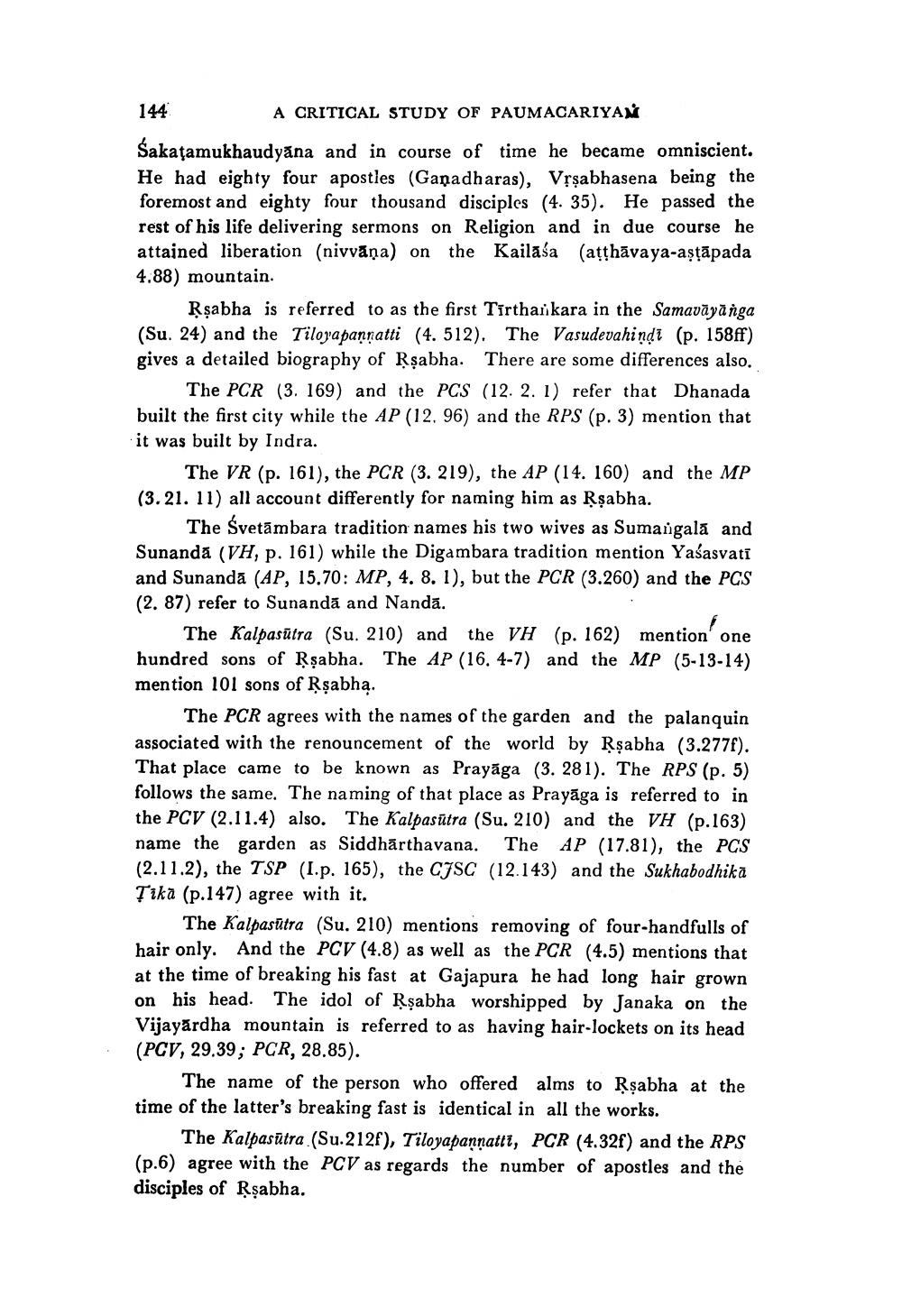________________
144
A CRITICAL STUDY OF PAUMACARIYAM
Śakaṭamukhaudyāna and in course of time he became omniscient. He had eighty four apostles (Ganadharas), Vṛṣabhasena being the foremost and eighty four thousand disciples (4. 35). He passed the rest of his life delivering sermons on Religion and in due course he attained liberation (nivvāņa) on the Kailasa (aṭṭhāvaya-aṣṭāpada 4.88) mountain.
Rṣabha is referred to as the first Tirthankara in the Samavāyānga (Su. 24) and the Tilopapannatti (4. 512). The Vasudevahindi (p. 158ff) gives a detailed biography of Rṣabha. There are some differences also. The PCR (3. 169) and the PCS (12. 2. 1) refer that Dhanada built the first city while the AP (12, 96) and the RPS (p. 3) mention that it was built by Indra.
The VR (p. 161), the PCR (3. 219), the AP (14. 160) and the MP (3.21. 11) all account differently for naming him as Rṣabha.
The Svetambara tradition names his two wives as Sumangala and Sunanda (VH, p. 161) while the Digambara tradition mention Yaśasvati and Sunanda (AP, 15.70: MP, 4. 8. 1), but the PCR (3.260) and the PCS (2. 87) refer to Sunanda and Nanda.
The Kalpasūtra (Su. 210) and the VH (p. 162) mention' one hundred sons of Rṣabha. The AP (16. 4-7) and the MP (5-13-14) mention 101 sons of Rṣabha.
The PCR agrees with the names of the garden and the palanquin associated with the renouncement of the world by Rṣabha (3.277f). That place came to be known as Prayaga (3. 281). The RPS (p. 5) follows the same. The naming of that place as Prayaga is referred to in the PCV (2.11.4) also. The Kalpasūtra (Su. 210) and the VH (p.163) name the garden as Siddharthavana. The AP (17.81), the PCS (2.11.2), the TSP (I.p. 165), the CJSC (12.143) and the Sukhabodhika Tika (p.147) agree with it.
The Kalpasutra (Su. 210) mentions removing of four-handfulls of hair only. And the PCV (4.8) as well as the PCR (4.5) mentions that at the time of breaking his fast at Gajapura he had long hair grown on his head. The idol of Rṣabha worshipped by Janaka on the Vijayardha mountain is referred to as having hair-lockets on its head (PCV, 29.39; PCR, 28.85).
The name of the person who offered alms to Rṣabha at the time of the latter's breaking fast is identical in all the works.
The Kalpasutra (Su.212f), Tiloyapannatti, PCR (4.32f) and the RPS (p.6) agree with the PCV as regards the number of apostles and the disciples of Rṣabha.




